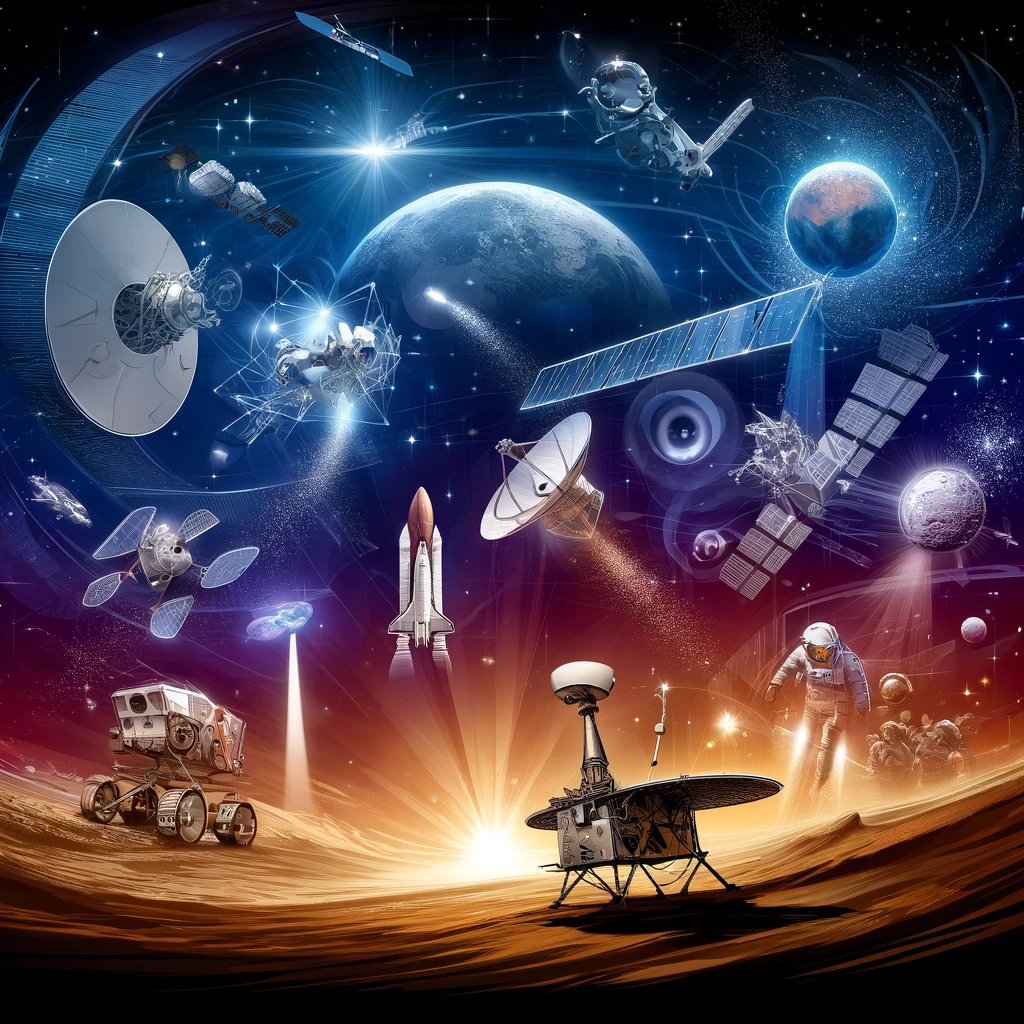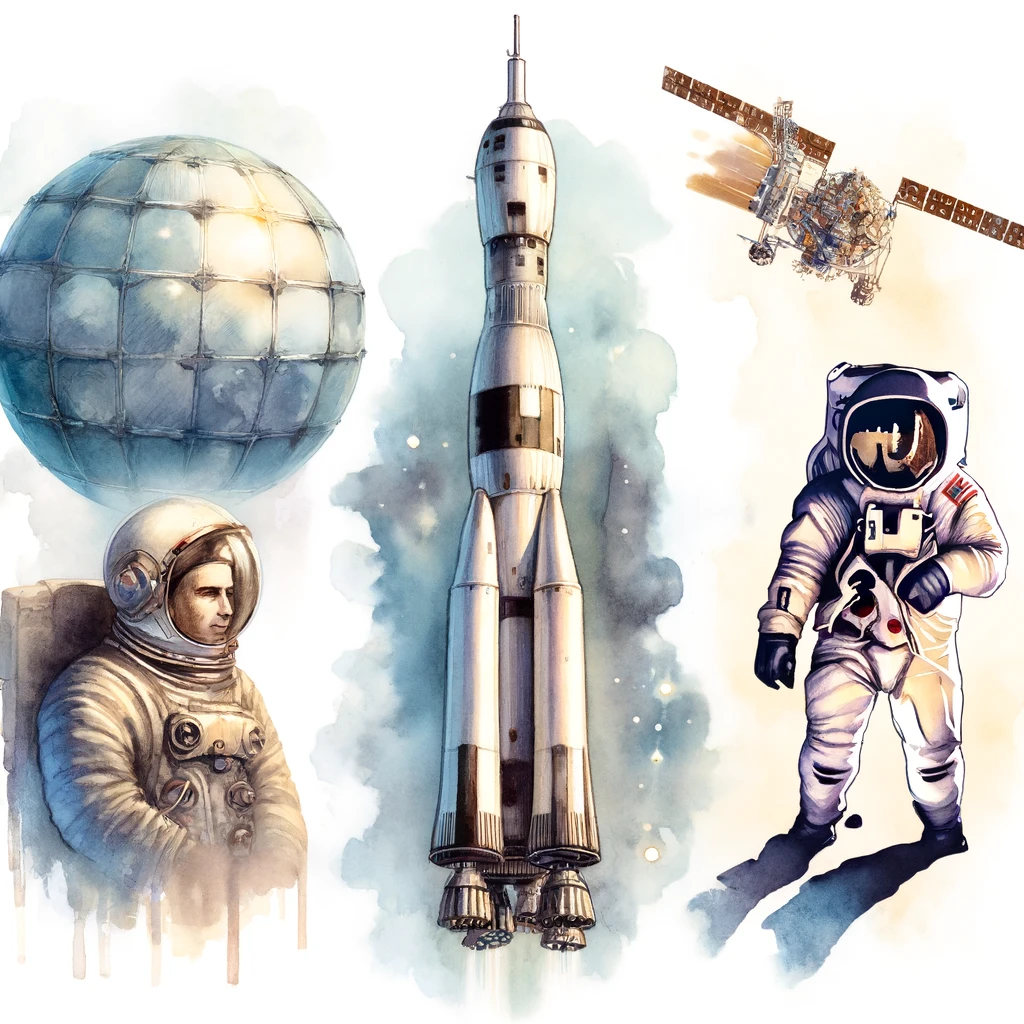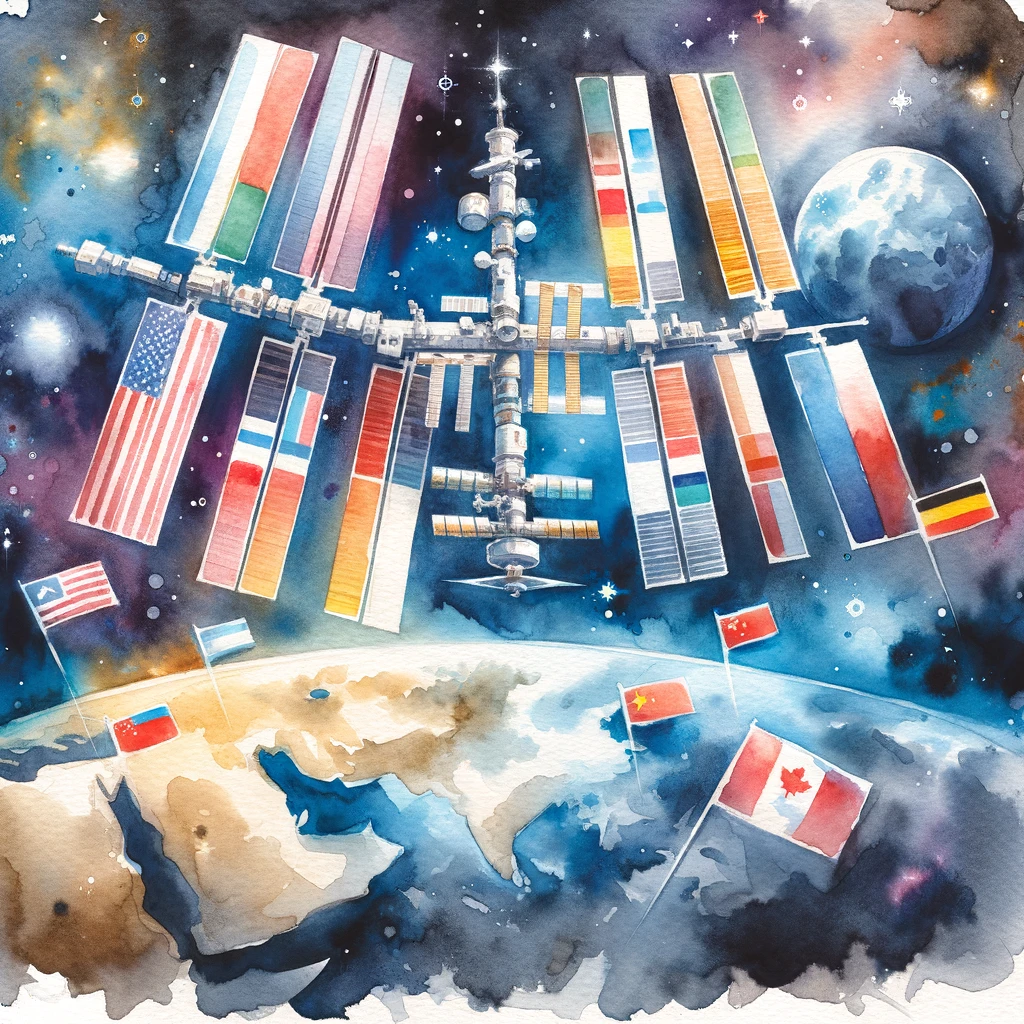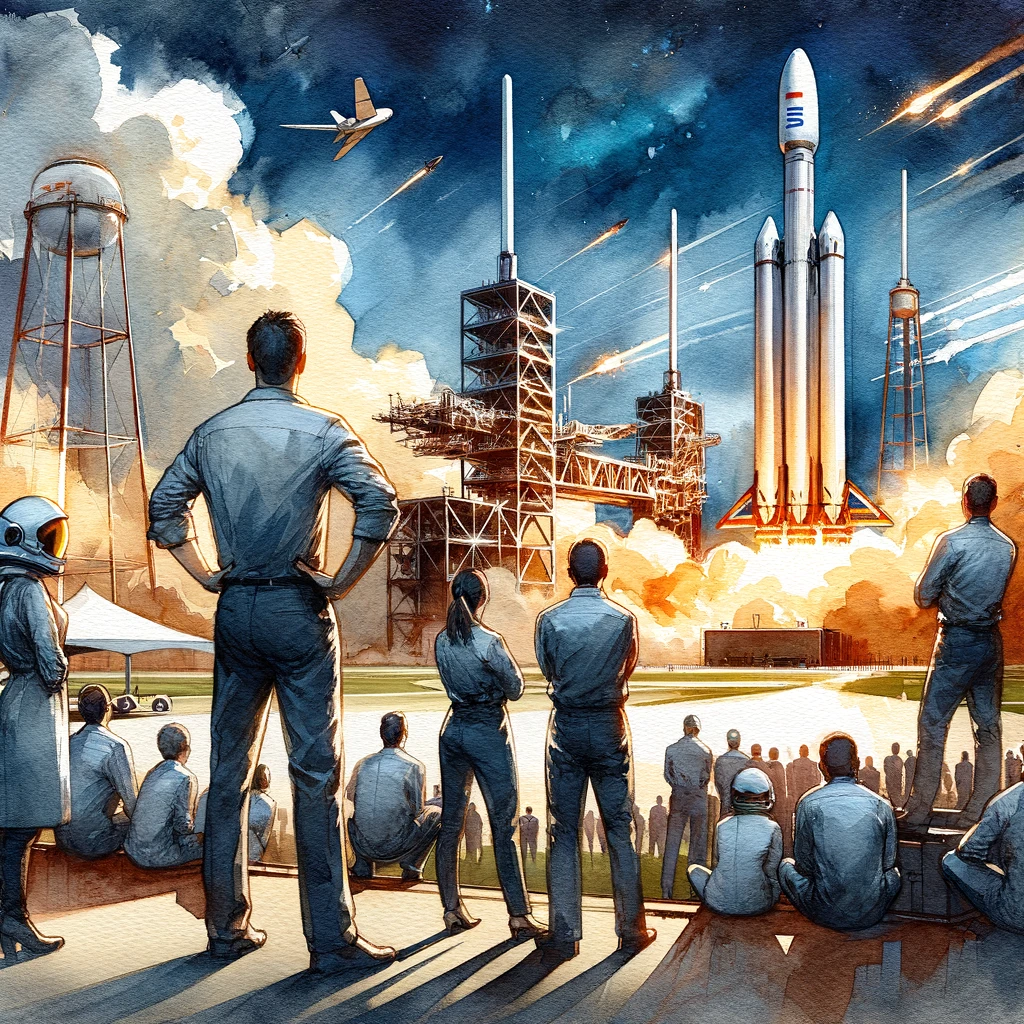The Evolution and Future of Space Exploration has been a remarkable journey, starting from the first satellite launch to manned missions and beyond. Over the decades, space exploration has significantly advanced, contributing to scientific discoveries, technological innovation, and international cooperation. As humanity continues to push boundaries, the future promises even more exciting possibilities, from deep space missions to sustainable space habitats. Some key milestones and future trends in The Evolution and Future of Space Exploration include:
- The launch of Sputnik in 1957 marked the beginning of the space age and human space exploration.
- The Apollo missions in the 1960s and 1970s landed humans on the moon, showcasing space exploration’s potential.
- Space agencies are now focused on Mars exploration, aiming to send humans and establish sustainable habitats.
- Private companies like SpaceX and Blue Origin are revolutionizing space travel with reusable rockets and commercial space flights.

Milestones in Space Exploration
Early Beginnings and the Space Race
- Sputnik 1 (1957): Launched by the Soviet Union, Sputnik 1 was the first artificial satellite to orbit Earth, marking the beginning of space exploration and the space race between the USA and the USSR.
- Yuri Gagarin (1961): Soviet astronaut Yuri Gagarin became the first human to journey into outer space and orbit the Earth aboard Vostok 1, a landmark achievement that underscored Soviet dominance in early space exploration.
- Apollo 11 (1969): The United States achieved a significant milestone with the Apollo 11 mission, when astronauts Neil Armstrong and Buzz Aldrin became the first humans to set foot on the Moon, solidifying the USA’s leadership in space exploration.

Unmanned Space Probes
- Mariner Missions (1962-1973): NASA’s Mariner missions provided the first detailed images of Venus and Mars, expanding our knowledge of these neighboring planets.
- Voyager Probes (1977): Launched by NASA, the Voyager 1 and Voyager 2 probes conducted a grand tour of the outer planets and are currently the farthest human-made objects from Earth, still sending data back to us from interstellar space.
Mars Exploration
- Viking Missions (1976): The USA’s Viking 1 and Viking 2 missions successfully landed on Mars and conducted experiments to search for signs of life and understand the planet’s geology.
- Mars Rovers – Spirit, Opportunity, and Curiosity: The Mars rovers have provided extensive data on the Martian surface, with Curiosity exploring the Gale Crater since 2012, providing insights into Mars’ climate and geology.
International Space Collaboration
- International Space Station (1998-present): The ISS is a symbol of international cooperation, involving the USA, Russia, Europe, Japan, and Canada. It serves as a laboratory for scientific research in microgravity and a platform for future deep space missions.
Recent Achievements
- Rosetta Mission (2014): The European Space Agency’s Rosetta mission was the first to successfully land a probe (Philae) on a comet, providing valuable data on its composition.
- Perseverance Rover (2020): NASA’s Perseverance rover landed on Mars to search for signs of past life and collect samples for future return to Earth, continuing the legacy of Mars exploration.

International Collaboration in Space
The International Space Station (ISS)
The ISS exemplifies the spirit of international collaboration in space. Launched in 1998, it has been continuously inhabited since 2000 and serves as a hub for scientific research and experimentation. The ISS has hosted astronauts from 19 countries, facilitating cooperation and knowledge sharing among nations.
Significance
- Scientific Research: The ISS supports a wide range of scientific experiments in microgravity, contributing to advancements in medicine, materials science, and our understanding of fundamental physics.
- Technological Development: It provides a testbed for technologies essential for future space exploration, such as life support systems, radiation protection, and long-duration spaceflight.
Joint Missions
- Hubble Space Telescope: A joint project between NASA and the European Space Agency, Hubble has revolutionized our understanding of the universe by providing detailed images of distant galaxies, nebulae, and other celestial objects.
- Mars Rover Missions: The ExoMars program, a collaboration between the European Space Agency and Roscosmos (Russia), aims to explore Mars’ surface and search for signs of life, demonstrating the benefits of pooling resources and expertise.
Challenges and Benefits
- Challenges: International collaboration can face challenges such as geopolitical tensions, budget constraints, and differing priorities among participating countries.
- Benefits: Collaborative efforts enhance scientific output, share costs and risks, and foster peaceful relations between countries.
The Role of Private Companies
SpaceX
Founded by Elon Musk in 2002, SpaceX has revolutionized space travel with its focus on reducing launch costs and advancing technology for interplanetary missions.
- Falcon Rockets: The reusable Falcon 9 and Falcon Heavy rockets have significantly lowered the cost of access to space, making it more affordable for governments and private entities.
- Crew Dragon: SpaceX’s Crew Dragon spacecraft has restored the USA’s capability to launch astronauts to the ISS from American soil, previously reliant on Russian Soyuz spacecraft since the Space Shuttle’s retirement.
Blue Origin
Founded by Jeff Bezos, Blue Origin focuses on space tourism and developing technologies for future human habitation in space.
- New Shepard: The New Shepard suborbital rocket has successfully flown multiple missions, offering space tourism experiences and microgravity research opportunities.
- New Glenn: The upcoming New Glenn rocket aims to compete in the heavy-lift launch market, potentially providing a platform for deep space exploration.
Other Notable Companies
- Virgin Galactic: Founded by Richard Branson, Virgin Galactic aims to provide commercial spaceflights for tourists, highlighting the growing interest in space tourism.
- Boeing and Lockheed Martin: These aerospace giants are developing technologies for space exploration, such as Boeing’s CST-100 Starliner spacecraft for crewed missions to the ISS.
Impact on Space Exploration
- Innovation and Cost Reduction: Private companies have driven innovation and reduced costs, making space more accessible.
- Commercialization: The involvement of private entities has accelerated the commercialization of space, opening new opportunities for research, industry, and tourism.

Advancements in Space Technology
Propulsion Systems
- Ion Thrusters: Ion propulsion systems, like those used on NASA’s Dawn spacecraft, provide efficient and long-duration thrust for deep space missions, ideal for exploring distant asteroids and planets.
- Nuclear Propulsion: Research into nuclear thermal propulsion promises higher efficiency and faster travel times for missions beyond Mars, potentially reducing the time needed for interplanetary travel.
Materials Science
- Lightweight Materials: Advanced materials, such as carbon composites and lightweight alloys, reduce spacecraft weight and improve fuel efficiency, critical for long-duration missions.
- Radiation Protection: New materials and shielding techniques are being developed to protect astronauts from harmful cosmic radiation on long-term missions beyond Earth’s magnetic field.
Life Support Systems
- Closed-Loop Systems: Innovations in closed-loop life support systems recycle air, water, and waste, essential for sustaining life on long-duration missions and future space colonies.
- Hydroponics and Food Production: Hydroponic systems for growing food in space are being tested on the ISS, providing fresh produce for astronauts and reducing the need for resupply missions.
The Concept of Space Colonization
Feasibility
- Lunar Colonies: The Moon is considered a viable location for initial colonization due to its proximity to Earth and potential resources like water ice, which can be used for life support and fuel production.
- Mars Colonies: Mars offers more challenges due to its distance and harsh environment, but its potential for terraforming and resource utilization makes it a long-term goal for space colonization.
Ethical Considerations
- Planetary Protection: Ensuring that space exploration does not contaminate other planets or bring harmful extraterrestrial organisms back to Earth is crucial for protecting both our planet and potential alien ecosystems.
- Resource Utilization: The ethical implications of extracting and utilizing resources from other celestial bodies need to be considered to avoid exploitation and preserve space environments.
Potential Benefits
- Scientific Discovery: Space colonies could serve as research hubs for studying the solar system, astrophysics, and the potential for life beyond Earth.
- Economic Opportunities: The exploitation of space resources, such as mining asteroids for precious metals, could drive economic growth and innovation.
- Human Survival: Establishing colonies on other planets could serve as a backup for humanity in case of catastrophic events on Earth, ensuring the long-term survival of our species.
Conclusion
The evolution of space exploration from the early days of the space race to the current era of international collaboration and private sector involvement has dramatically expanded our horizons. The future of space exploration holds immense promise, with advancements in technology and the potential for space colonization paving the way for new discoveries and opportunities. Understanding these developments is crucial for UPSC aspirants, as they reflect the growing importance of space in global affairs and the potential for humanity’s future beyond Earth.
| Evolution and Future of Space Exploration UPSC Notes |
| 1. Space exploration began with the launch of Sputnik 1 by the Soviet Union in 1957, marking the start of the space age. 2. The space race between the US and USSR led to landmark achievements like the moon landing by Apollo 11 in 1969. 3. International cooperation in space exploration has grown, exemplified by the International Space Station (ISS) involving multiple countries. 4. Emerging private companies like SpaceX and Blue Origin are driving the commercialization of space, reducing costs and expanding access. 5. India has established itself as a significant space power with missions like Chandrayaan and Mangalyaan, contributing to scientific research and exploration. 6. Space exploration has expanded beyond Earth’s orbit, with missions targeting Mars, asteroids, and plans for human missions to Mars in the future. 7. Technological advancements in reusable rockets and satellite technology are key to making space exploration more sustainable and economically viable. 8. The future of space exploration includes greater focus on space mining, planetary defense, and space tourism, raising ethical and regulatory challenges. |


